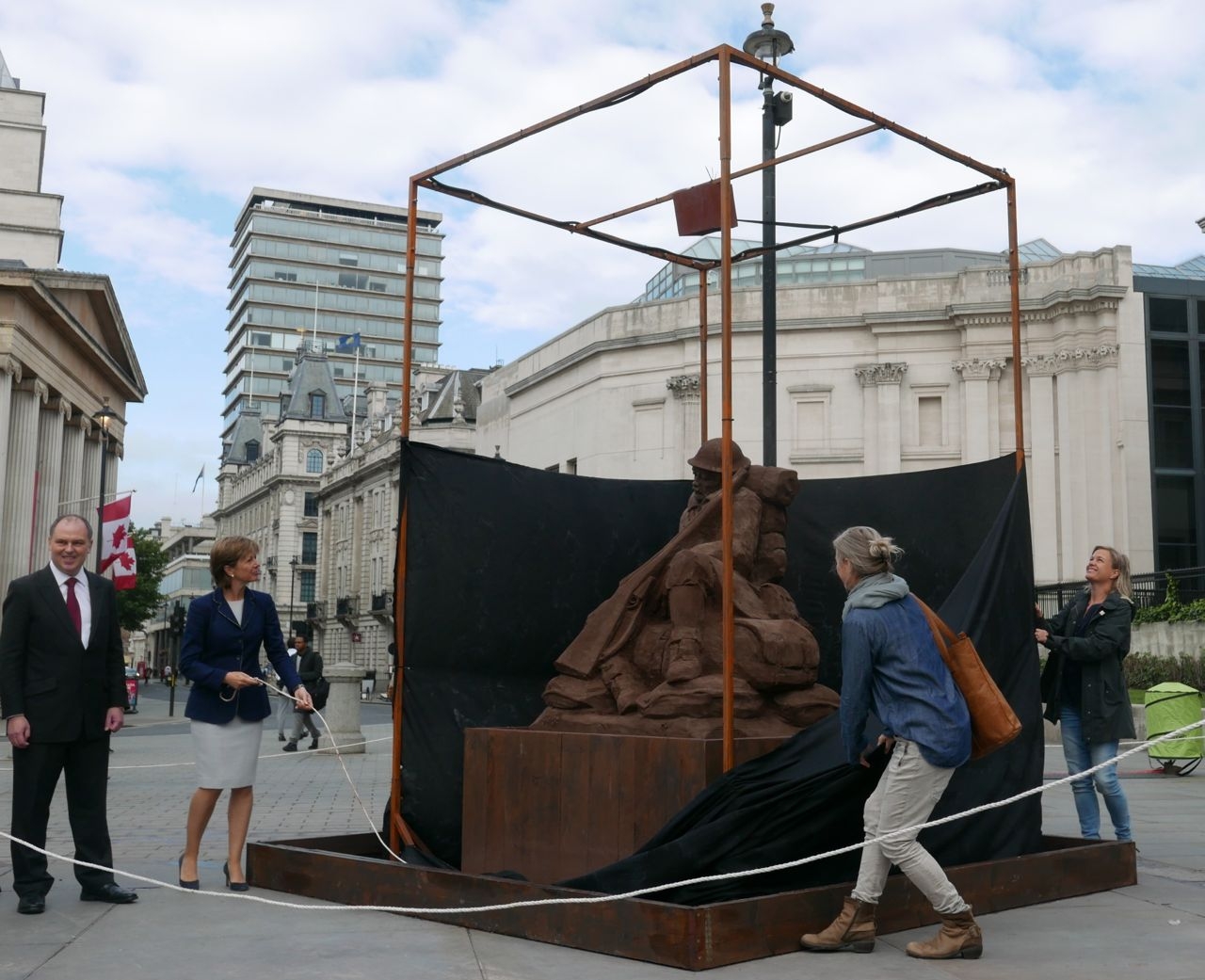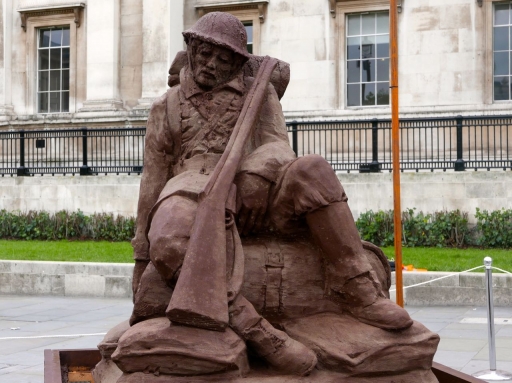The wearied figure of a soldier, crafted in sand mixed with mud from Passchendaele, has been unveiled in London ahead of the Third Battle of Ypres Centenary commemorations next week.
The sculpture, by Dutch artists Damian and Kilian Van Der Velden, is designed to leave a lasting impression on those who see it in Trafalgar Square.
But The Mud Soldier itself is transient, intended to dissolve slowly when exposed to rain.
The work is a physical symbol of the atrocious conditions faced by the armies in Flanders a century ago, as record rainfall combined with intense shellfire to churn the battlefields into a quagmire.
Unsettled weather is forecast for London in the run-up to Centenary but in any event, the soldier will be displayed for just four days, until Friday (July 28).

Unveiling of the ‘Mud Soldier’ by Andrew Daines, of VisitFlanders; Councillor Rachael Robathan from Westminster City Council; and the artists Damian and Kilian Van Der Velden (Photo: Centenary News)
Commissioned by VisitFlanders, the project is a joint venture with Westminster City Council.
Of the 61 Victoria Crosses awarded during the Third Battle of Ypres/Passchendaele, two were won by Westminster-born soldiers: Captain Thomas Colyer-Fergusson, of the Northamptonshire Regiment, and Second Lieutenant Dennis Hewitt, of the Royal Hampshire Regiment. Both fell on the first day of the Allied offensive, 31 July 1917.
Lasting until November 1917, the fighting resulted in more than 500,000 casualties on both sides (killed, wounded, or missing).
Descendants of some of those who died attended today’s unveiling of The Mud Soldier.
“We hope that this art installation will inspire the visiting public to think about this milestone year in the Centenary of one of the First World War’s most horrific battles,” said Andrew Daines, Director of VisitFlanders UK and Ireland.
Centenary Commemorations for the Third Battle of Ypres/Passchendaele will take place in Belgium on July 30 and 31. The individual stories of some of the soldiers awarded the Victoria Cross are explored on the Flanders site, Lives of Passchendaele.
Reporting from Trafalgar Square by CN Editor
Images: Centenary News
